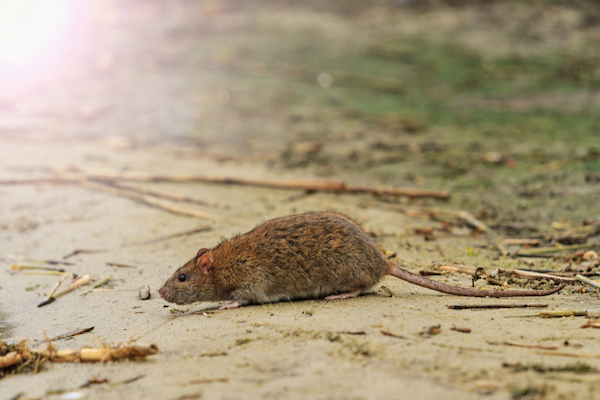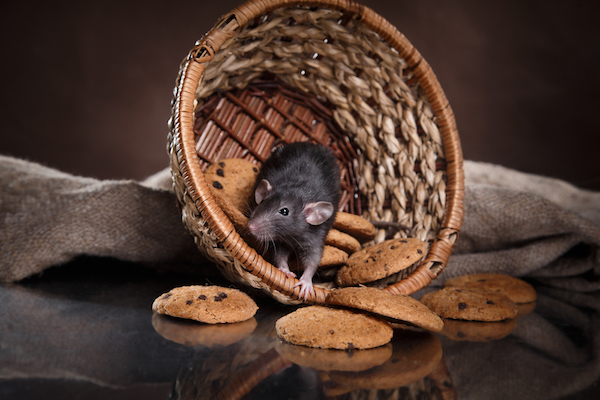A recently conducted study found that Detroit is the Ninth most rat infested city in the US. Detroit’s rat population is on the rise.
Why are rat populations in Detroit becoming such a problem? Is there anything we can do to keep the population down, or least keep the rats out of our homes? Griffin wants to answer these questions, so you know where your rats might be coming from and what you can do about it.

Why Do Rats Love Detroit?
Like most pests, rats have simple needs and want to fulfill those needs as easily as possible. They flock to the parts of the world where the things they need are abundant, easily found, and as risk-free to pursue as possible. Cities like Detroit meet these criteria exceptionally well. Here’s what rats need, and how Detroit gives it to them:
Food
Most rats rarely wander further than their “home range” of 50 to 150 feet in any direction from the nest. Rats have poor eyesight, and prefer to know the environments they live in well to limit risk of predation or starvation.
A rat’s environment has to ensure that they can get enough food to survive while staying close to home. Cities solve this problem. High population densities create a lot of trash, which rats can use to feed themselves without ever leaving the nest. The next time you see a rat, check to see if there’s a dumpster nearby. Chances are, their nest isn’t far off.
Water
Just like pretty much everything else, rats need water to survive. Rats have to find a way to get a sustainable source of water close to their homes. It also has to be safe and relatively consistent, since rats are vulnerable while they drink. Cities solve this problem too.
Not only is there always a surplus of free water for rats somewhere, that water is often safe to linger around. Adult brown rats require only an ounce of water daily. Leaking pipes, broken valves, or condensation are more than enough to sustain them. Cities provide more chances to find water sources that can be accessed safely than any other environment would.
Shelter
The other thing all rats need to survive is warmth. When Winter comes, rat’s fur isn’t enough to protect them from freezing. They have to seek shelter in warm enclosures.
Cities provide for this need better than anywhere else, too. Old buildings, buildings that have fallen into disrepair, abandoned buildings, and unstaffed warehouses are all perfect places for rats to wait out the winter. They have all they can eat while they wait! The nooks and crannies of cities provide more safe shelter than anywhere else, and rats take advantage.

Keeping Them Out
Know that you know why rats are coming into your city, you can apply that knowledge to keeping them out. Rats go to places where they can easily get what they need. If you want to keep them away, you have to make sure they can’t.
Food
The most important way you can avoid attracting rats is by depriving them of food sources. Use tightly sealed, thick garbage bags to store and transport all your trash. Rinse out empty food containers before disposing of them. Keep your home’s garbage in a sealed container and keep it off the ground. Take your garbage out frequently, and make sure the dumpster you’re taking it out to is 15 feet or more away from your home.
Clean up your kitchen and dining surface immediately following each meal. Vacuum the rooms you eat in frequently and thoroughly. Make sure you put away groceries in their proper places. Don’t leave food out on the kitchen counter, especially not fruits or breads. Don’t leave snacks out after you’re finished with them, and don’t leave dishes in the kitchen sink.
Water
Once you’ve dealt with the food sources, look for places where rats could be getting water. Make sure you don’t have any leaking faucets, shower heads, or pipes. Invest in a humidifier for humid areas of your home. Look for drafts that could be letting air in. Make sure other water-based appliances like your dishwasher and refrigerator aren’t leaking either.
Finally, look for moisture. Make sure you’re always running your bathroom fan when bathing. Dry and put away dishes as soon as the dishwasher’s done with them. Rinse out bottles and cans before recycling them, even if almost all the liquid in the container is gone. Seal recyclables in bags and take it out frequently.
Shelter
Keeping food and water away will help, but if you really want to keep rats out, you have to make sure they have no way of getting in. Rats can squeeze through openings no larger than the size of a nickel, so don’t assume any cracks or gaps are rat-proof. Seal cracks in your foundation or walls with caulk. Replace worn weatherstripping, screens, and wooden frames. Make sure your windows and doors are properly sized and seated.
One of the most common places rats sneak in is around utility lines entering the building. Inspect that area and seal any gap you find between the lines and the house. Rats can also scurry up surprisingly steep surfaces such as trees to get on top of a house, so make sure your landscaping doesn’t create any likely paths to your roof. While you’re at it, try putting screens over your chimney and plumbing vent.
Remember: no matter how bad the rat problem, we can help you. We’ve been dealing with rats in Detroit and beyond for a long time, and we’re sure we can handle whatever they throw at us.

